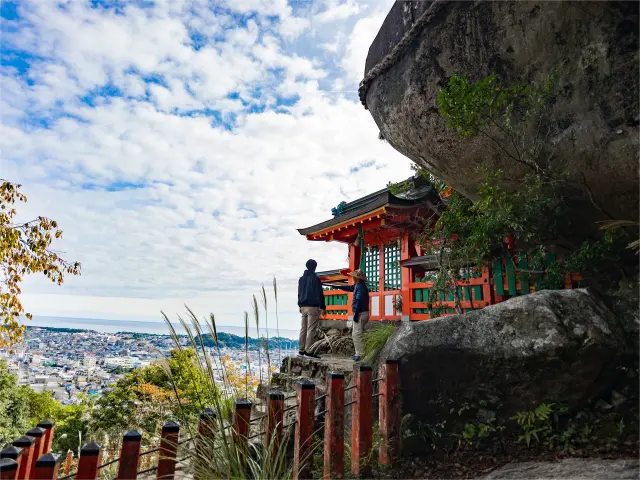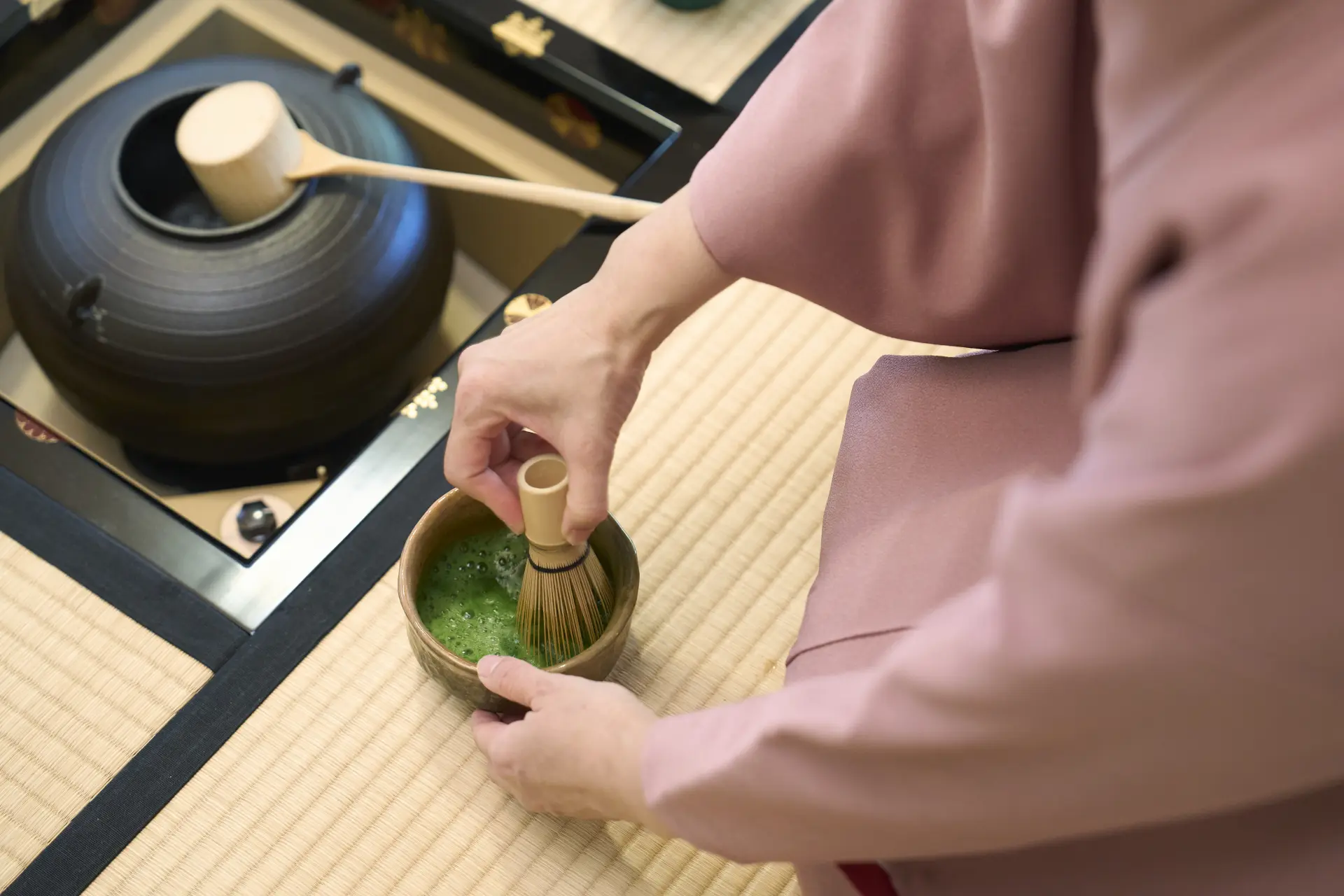
Osaka: A Journey Through Traditional Osaka
Last update
Osaka is known for comedy and food, but it is also a city with deep historical roots. Sakai thrived as a major trade hub from the 1460s to the 1570s, while the districts around Osaka Castle flourished as merchant towns from the Edo period onward. These areas embody traditional Osaka—a city shaped by commerce and hospitality. This journey explores historic sites where tradition and modern life coexist.
Table of Contents
DAY1
8:30 – Depart from Osaka Metro Umeda Station
Take the Osaka Metro Midosuji Line to its final stop, Minoh-Kayano Station. From there, transfer to a bus and get off at Katsuo-ji Bus Stop. The temple is just a short walk from the bus stop.
9:30 – Katsuo-ji Temple: The Temple of Victory Daruma
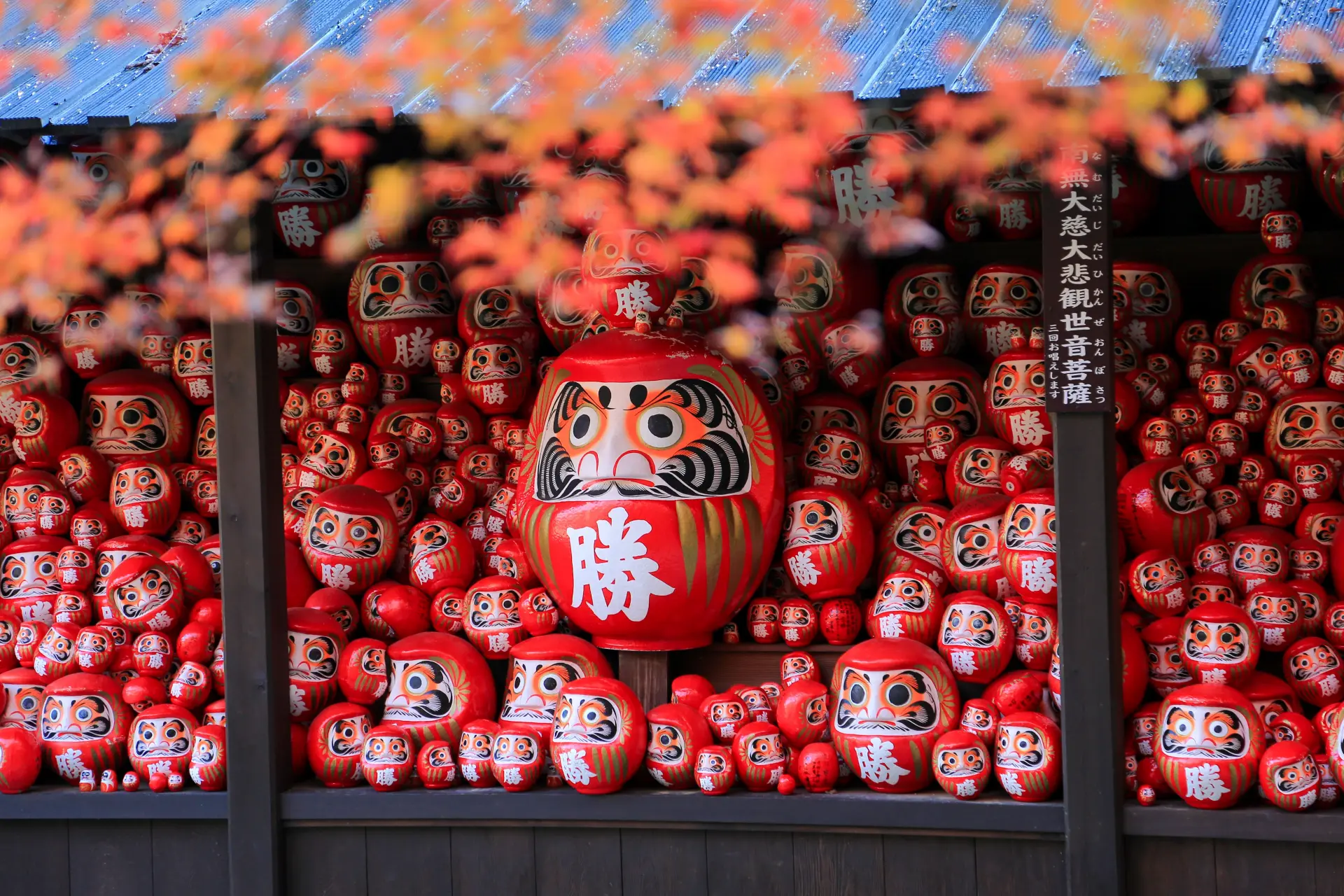
@chisato0040
A unique sight created by rows of "Kachi Daruma" dolls dedicated by worshippers on the offering shelf.
The first stop on this traditional Osaka journey is Katsuo-ji Temple, located in the northern part of Osaka, an area known as Hokusetu. With a history spanning over 1,300 years, this temple has long been revered for bringing "kachi-un," or the fortune of victory. It is one of the most prestigious temples in the Kansai region, attracting worshippers from across Japan who seek success in various aspects of life.
The temple grounds are filled with countless "Kachi-Daruma" dolls, creating a unique and striking sight. Katsuo-ji is also known for its seasonal beauty, with flowers blooming year-round.
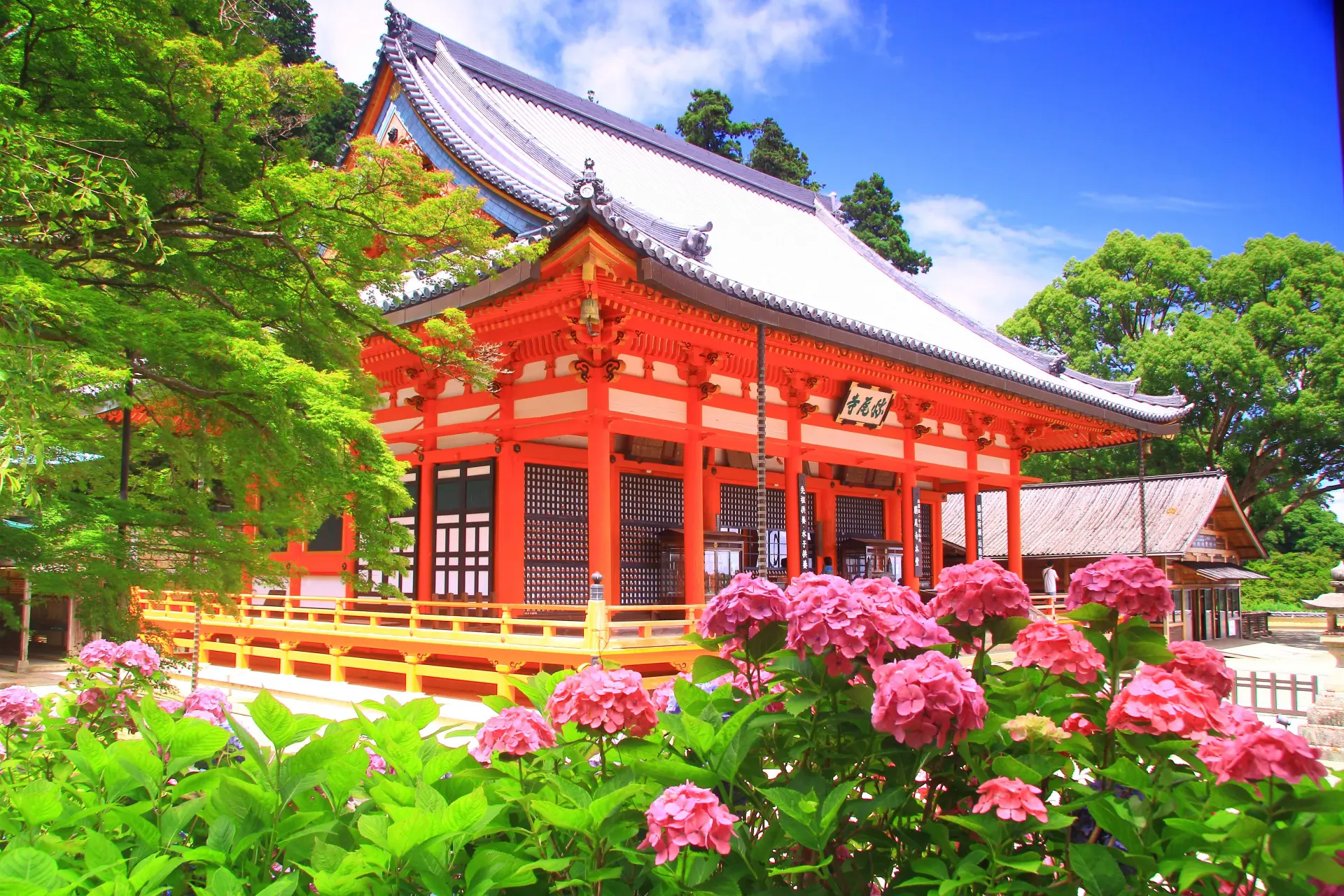
Renowned as a "Temple of Flowers," featuring hydrangeas in early summer and cherry blossoms in spring.
TStrolling through the temple grounds and pausing to admire the scenery, visitors eventually reach the Main Hall, home to the Eleven-Faced Thousand-Armed Kannon. After offering a silent prayer, visitors can head to the reception area in front of the Main Hall to receive a "Kachi-Daruma" or a "Daruma Omikuji" fortune slip.
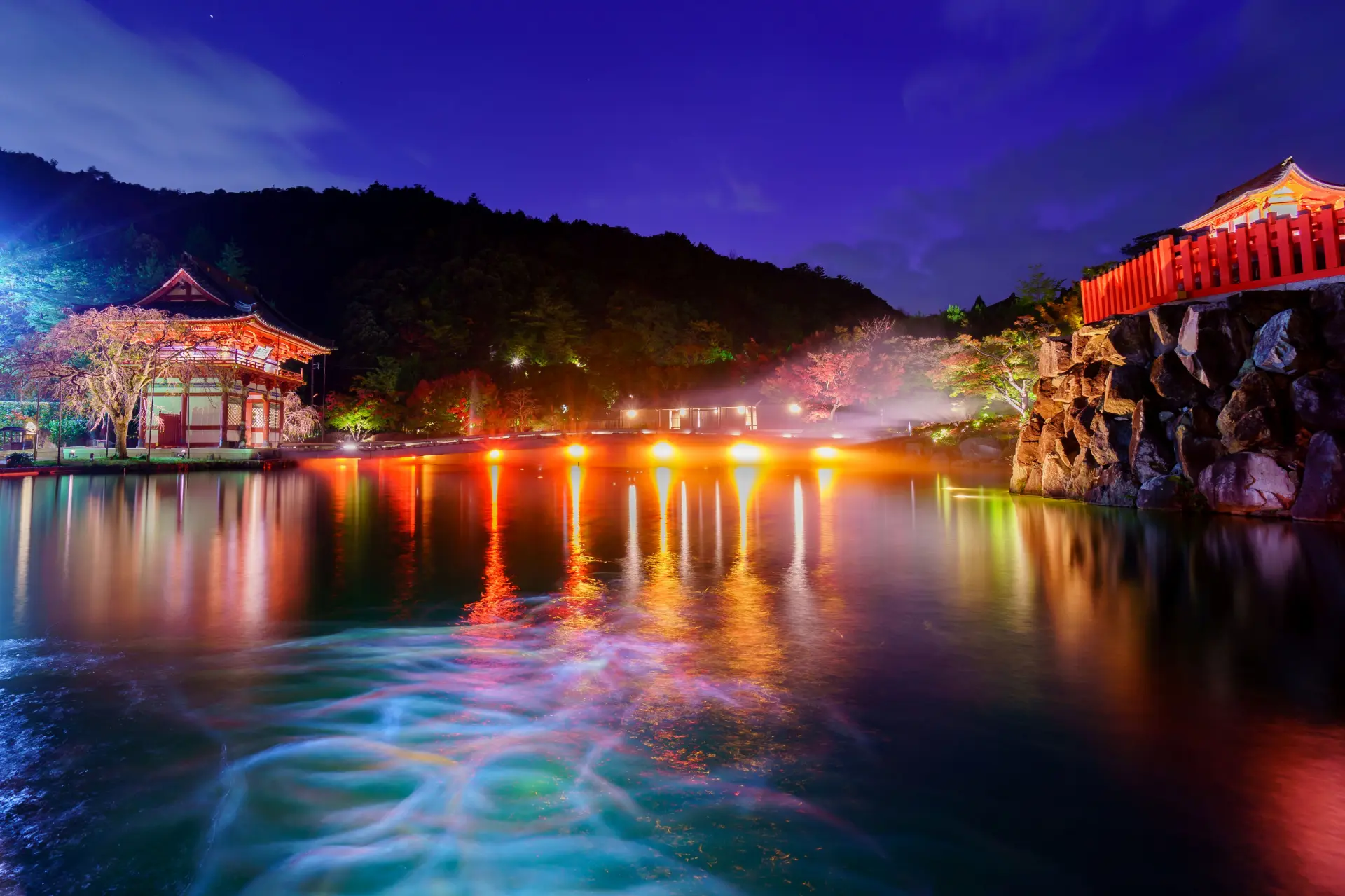
During the autumn foliage season, limited-time night illuminations are held. The temple grounds take on a magical atmosphere.
Basic Information
- Name in Japanese
- 勝尾寺
- Address
- 2914-1 Aomatani, Minoh, Osaka 562-8508
- Phone
- 072-721-7010
- Access
- Take the Osaka Metro Midosuji Line to Minoh-Kayano Station, then take the Hankyu Bus (approx. 22 min) to Katsuo-ji Bus Stop. The temple is a short walk from the stop.
- Hours
- 8:00–17:00 (Saturdays until 18:00, special night illumination days until 20:30)
- Admission
- Adults (high school and above): ¥500 / Elementary & Middle School: ¥400 / Preschool (under 6): ¥100 / Free for children under 2
- Closed
- Open year-round
- URL
- URL
12:40 – Okonomiyaki Lunch at a Popular Local Spot
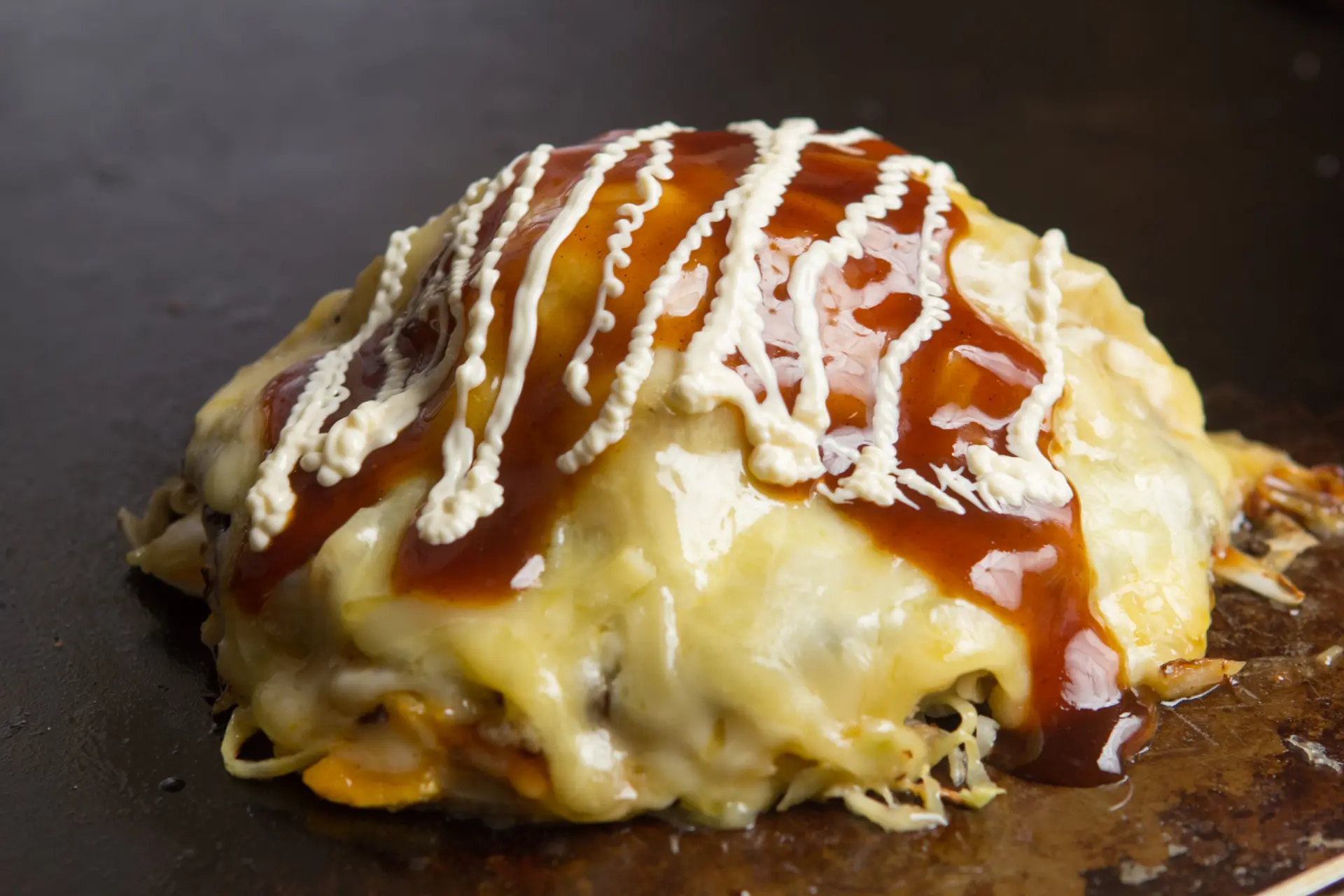
Tomato Cheese Tama. An original dish featuring the perfect combination of fresh tomatoes and cheese.
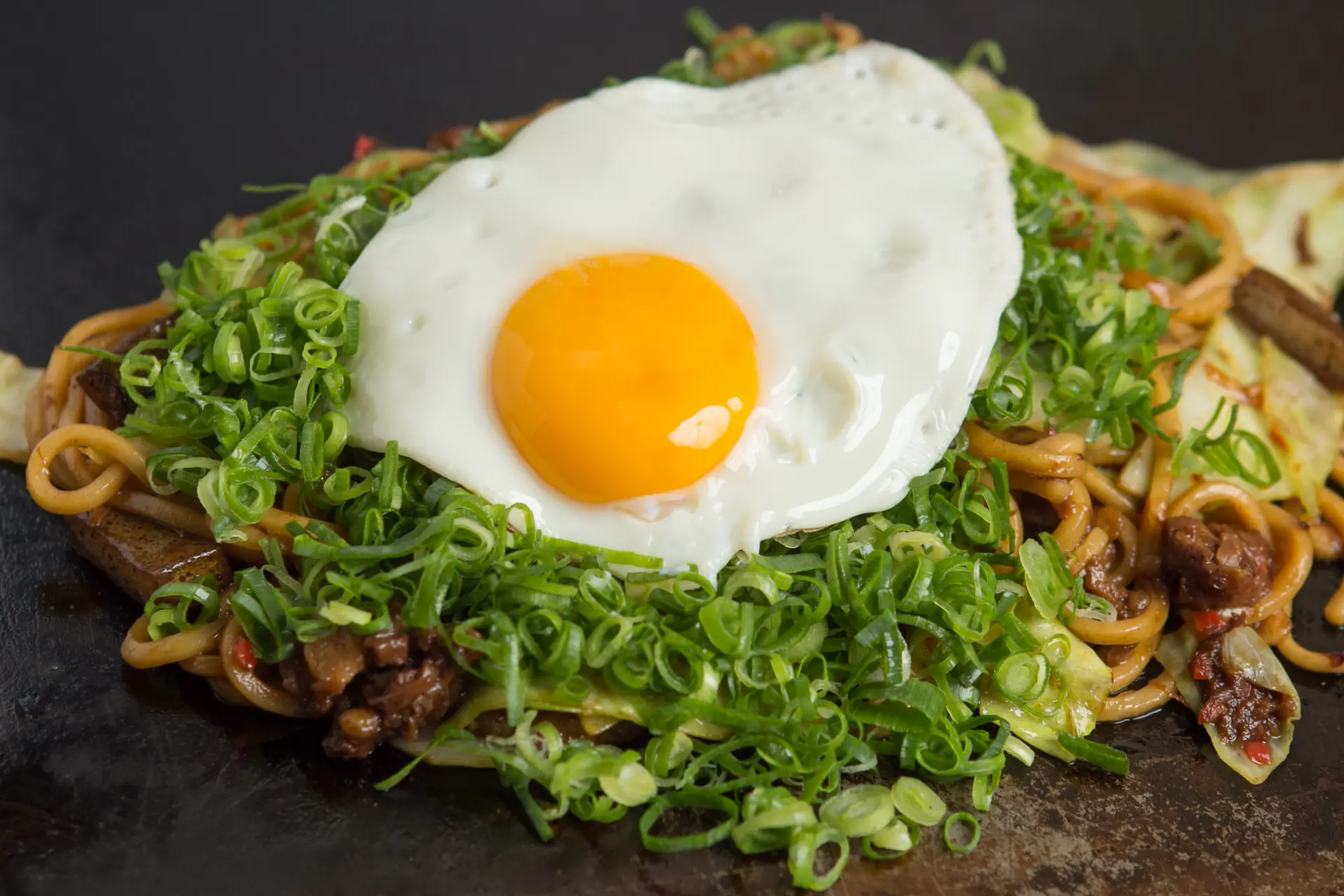
Haikara Yakisoba. A signature dish made with beef tendon and konjac simmered for over four hours.
After a bus and subway ride back to central Osaka, it’s time to enjoy one of Osaka’s signature dishes—okonomiyaki. This meal takes place in the Tanimachi area, which was once home to Osaka Castle’s castle town and is now a major administrative district. The chosen restaurant, Ponpocotei, is a popular chain with ten locations throughout Osaka. Known for its light, crispy texture and generous fillings, its okonomiyaki is carefully prepared to bring out the natural flavors of the ingredients. The restaurant also takes pride in its additive-free sauce, made with a blend of fresh vegetables and fruits.
The menu features both classic and original flavors, making it hard to choose. Asking staff for recommendations adds to the fun. In the end, we ordered multiple dishes to share, rediscovering Osaka’s rich food culture.
Basic Information
- Name in Japanese
- 狸狸亭 天満橋店
- Address
- 1F, Tanimachi Center Building, 2-4-5 Tanimachi, Chuo-ku, Osaka 540-0012
- Phone
- 06-6766-4468
- Access
- 3-minute walk from Osaka Metro Chuo Line Tanimachi 4-chome Station
- Hours
- 11:00–23:00 (Last order: 22:30)
- Closed
- Open year-round
- URL
- URL
13:30 – A Journey into Noh Theater at Yamamoto Noh Theater
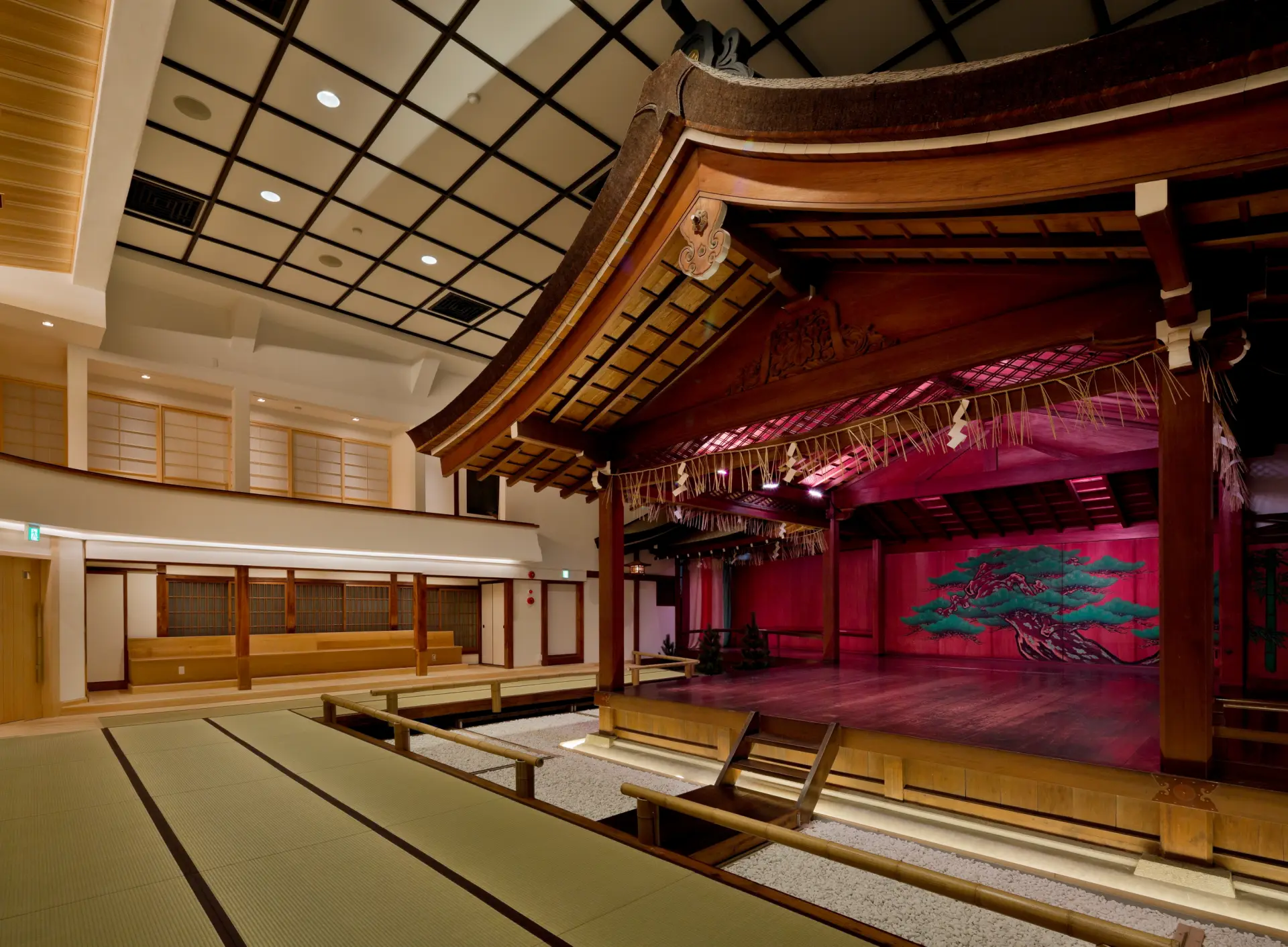
The experience takes place at Osaka’s oldest Noh theater.
After lunch, a short three-minute walk leads to the next destination, Yamamoto Noh Theater. Originally built nearly a century ago, this is Osaka’s oldest surviving Noh theater. Although it was destroyed during World War II, it was later rebuilt and remains a cherished cultural landmark near Osaka Castle.
Noh, a traditional performing art loved by legendary warlords such as Oda Nobunaga and Toyotomi Hideyoshi, has been carefully preserved and passed down through generations. Today, Yamamoto Noh Theater not only continues this legacy but also plays an important role in introducing Noh to a global audience. The theater offers hands-on Noh experiences along with other traditional cultural programs.
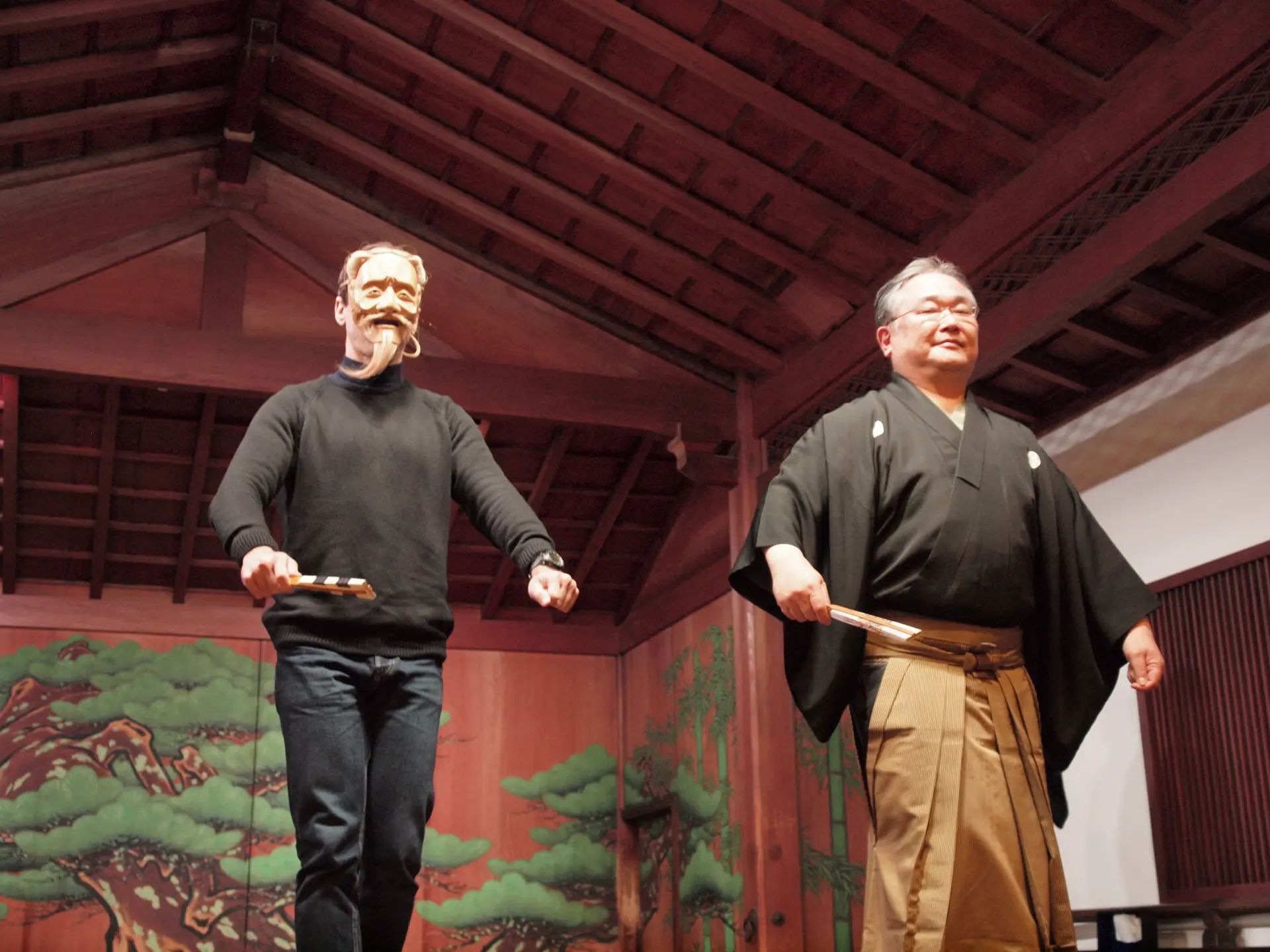
Trying suriashi (sliding steps) while wearing a Noh mask. The limited vision makes it challenging to walk straight.
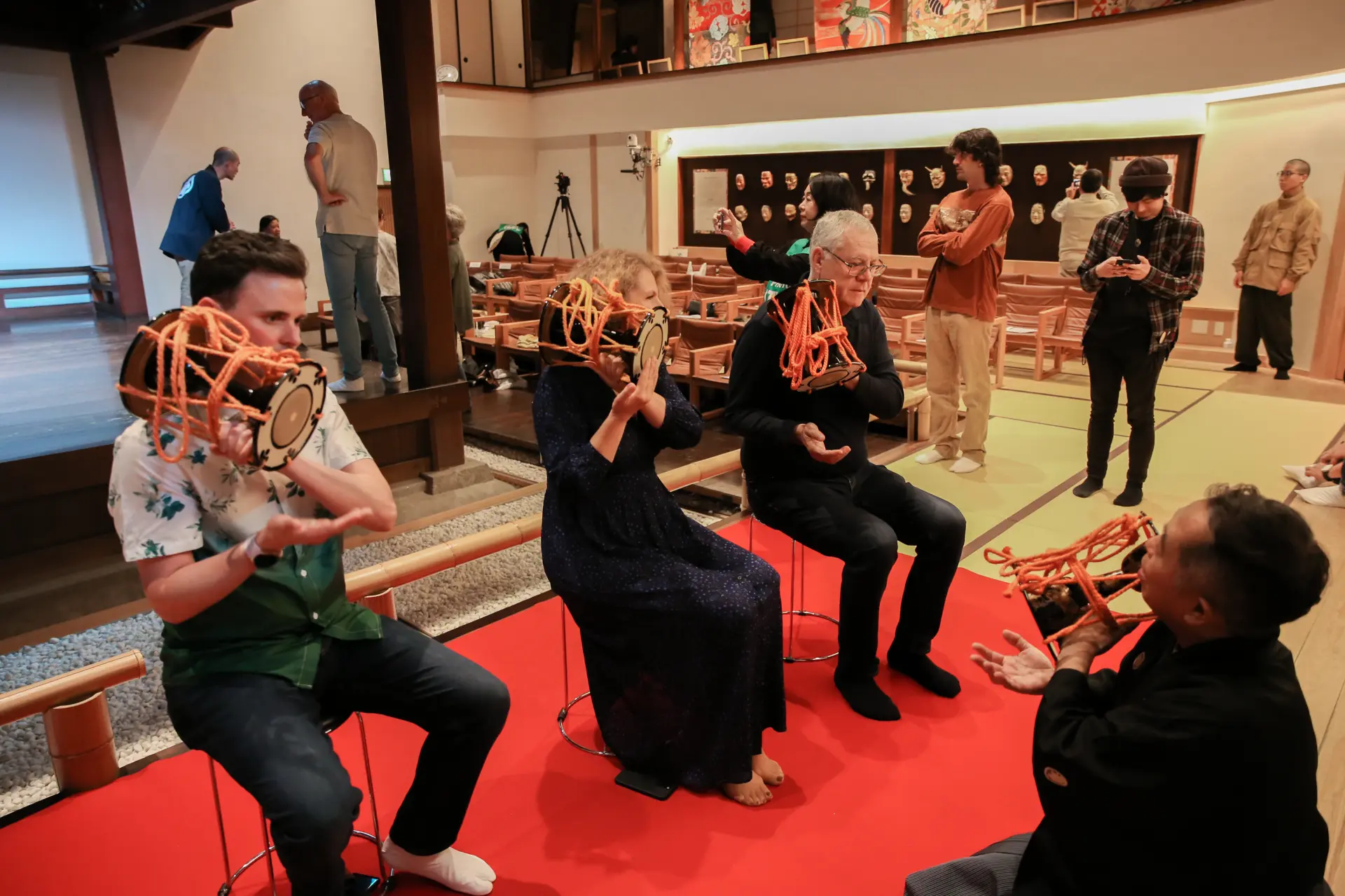
A hands-on experience with the kotsuzumi (small hand drum) under the guidance of a Noh performer
The experience starts with wearing white tabi socks, a ritual unique to Noh. On stage, participants practice sliding steps and explore Noh’s music, costumes, and chanting. This immersive session deepens their appreciation for the art form and its spiritual roots.
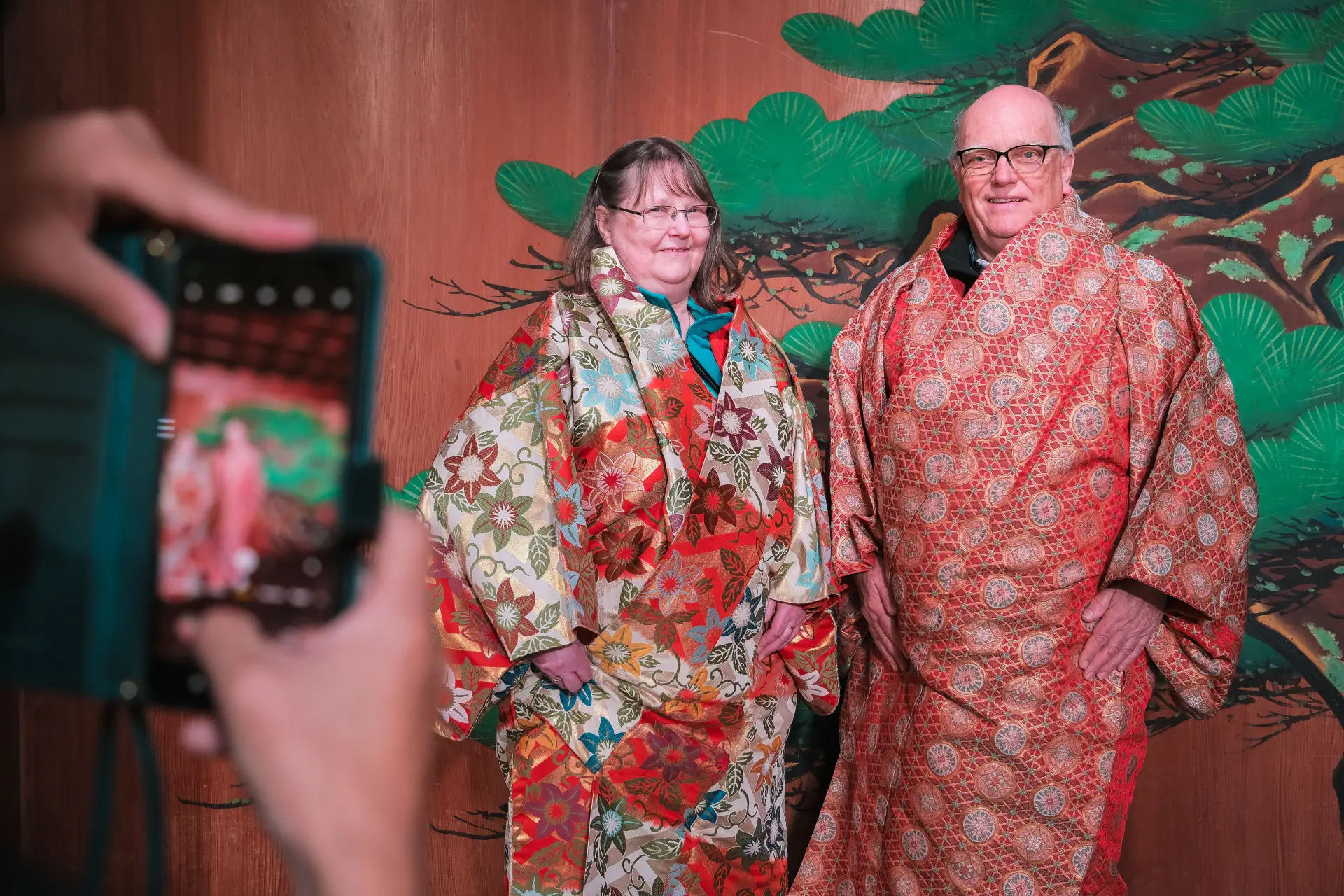
A chance to take a commemorative photo in traditional Noh attire on the Noh stage
Basic Information
- Name in Japanese
- 山本能楽堂「能楽体験ツアー」
- URL
- URL
15:45 – A Samurai & Ninja Experience That Engages All Five Senses
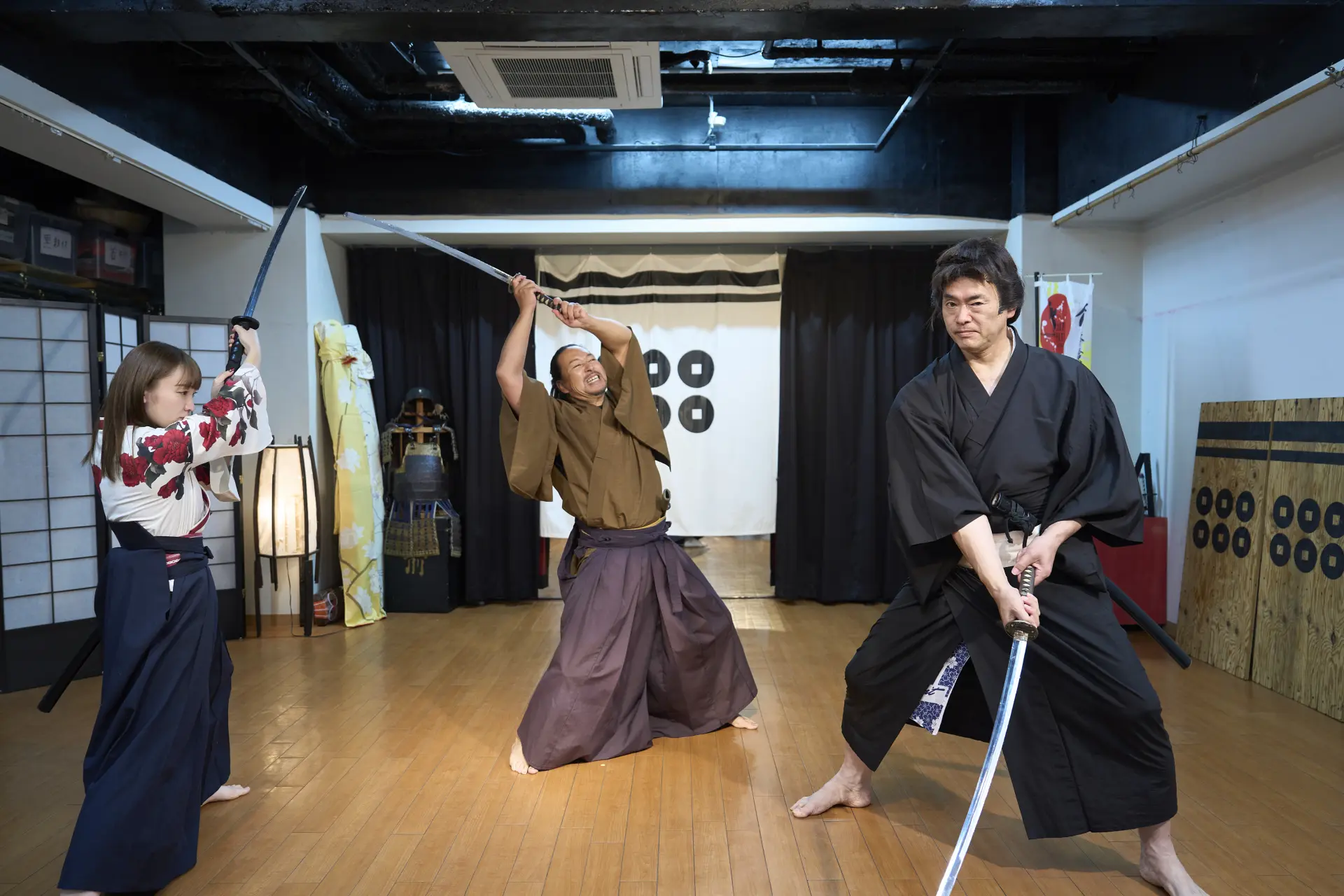
The tate (sword-fighting) performance by professional actors is far more intense than expected.
After immersing ourselves in the world of Noh, we leave the area around Osaka Castle and take the subway to the Minami district.
The next stop is located inside a building just above the station. Here, visitors can experience the traditional combat techniques of samurai and ninja, as seen in movies, period dramas, and anime. The action-packed demonstrations of sword fighting and Iaido performed by professional actors are captivating. Their intense movements convey not just skill but a powerful presence that resonates even without words. After watching the performance, participants wear authentic costumes and undergo training in basic movements and etiquette. The session begins with practicing the proper way to sit and bow. As the training progresses, focusing on posture and movement, the mind gradually becomes calm and centered.
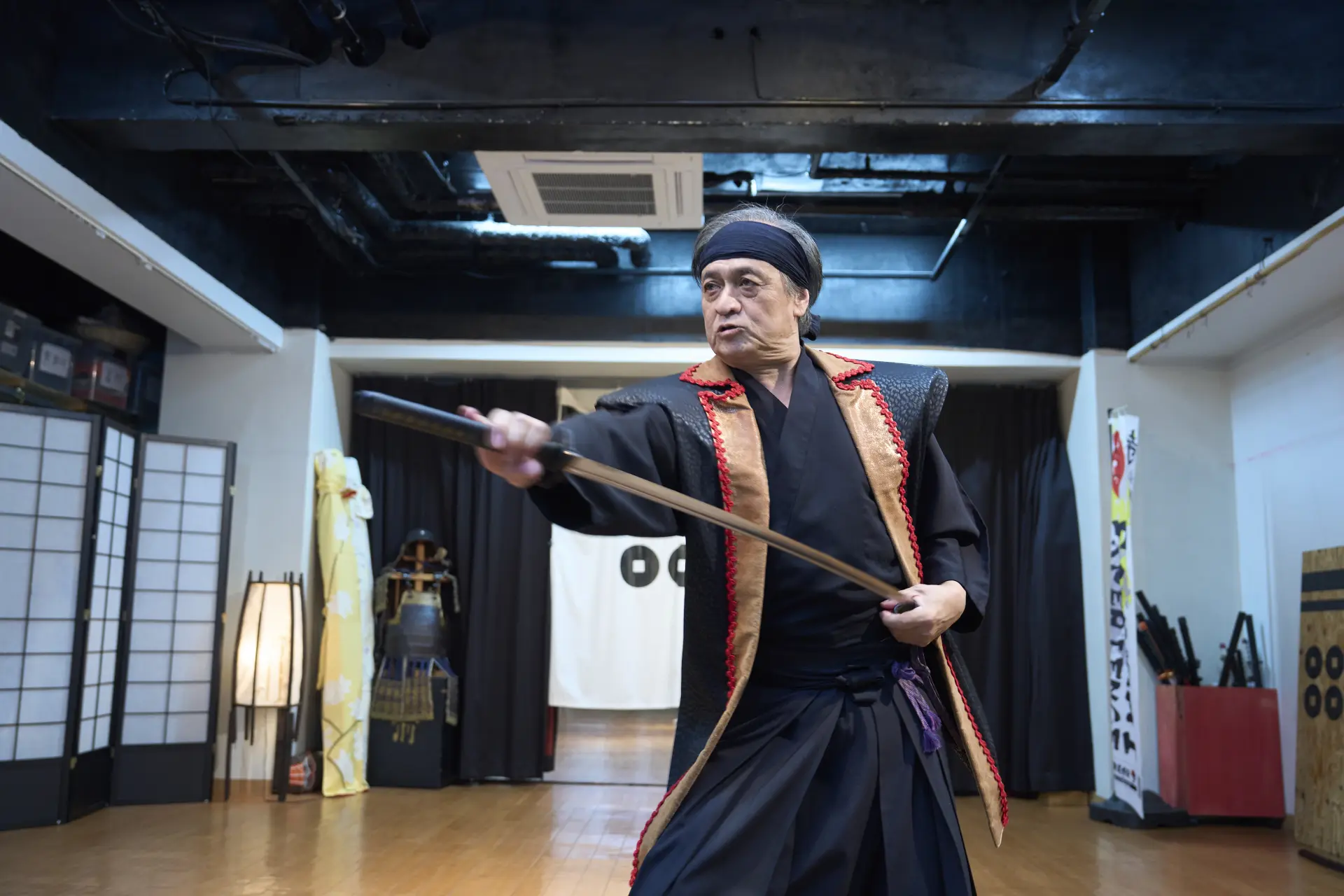
An iai (sword-drawing) performance. The sound of the blade cutting through the air echoes in the silence.
Though rooted in tradition, the experience is fun and engaging. The instructor encourages participants to enjoy the process as a gateway to Japanese culture. By the end, the sounds, movements, and atmosphere fully immerse them in the world of martial arts.
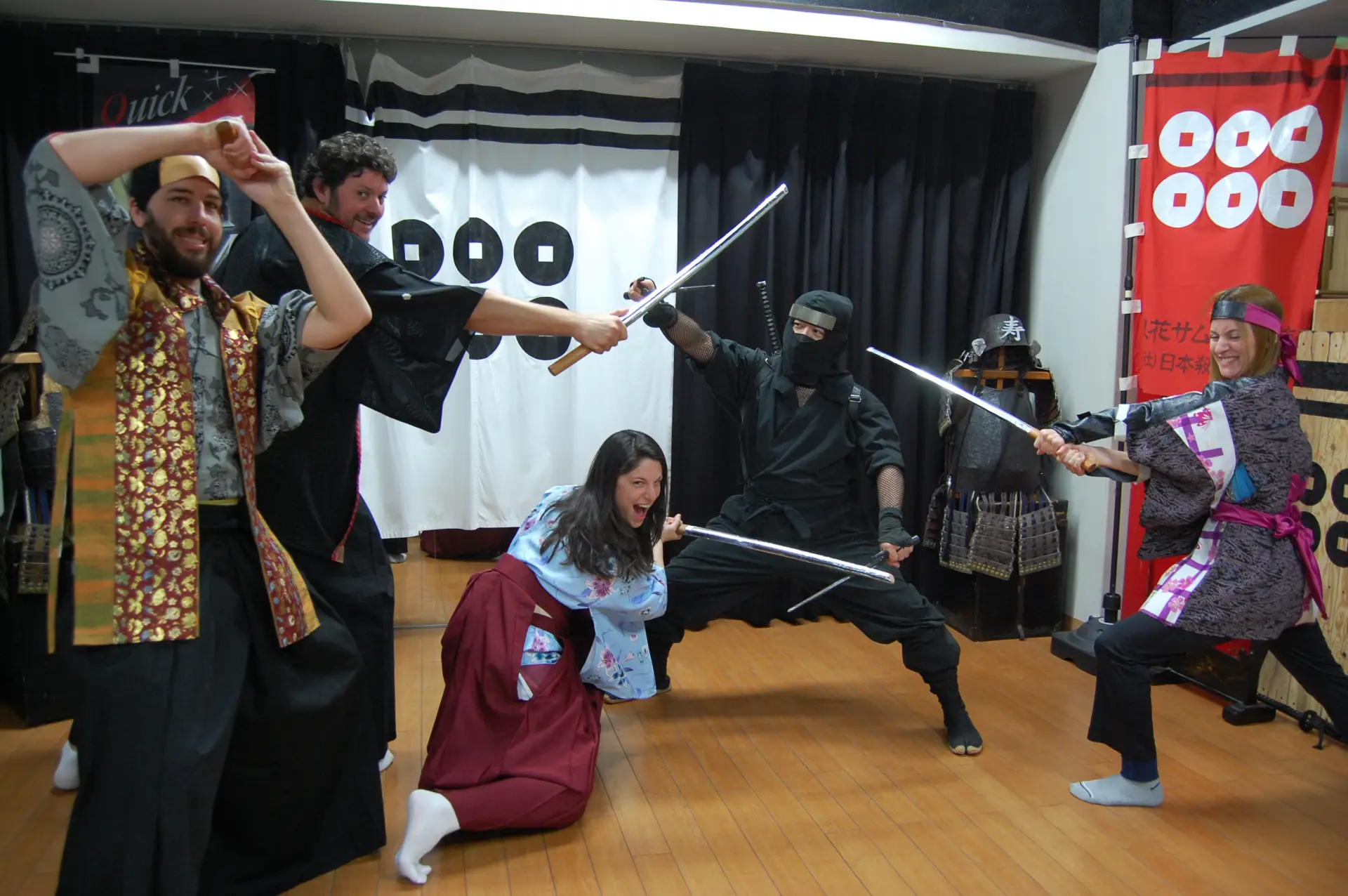
Dressing up and experiencing a samurai-style combat performance
Basic Information
- Name in Japanese
- 侍・忍者体験
- URL
- URL
18:00 – Staying in a Historic Merchant’s Residence: A Private Retreat
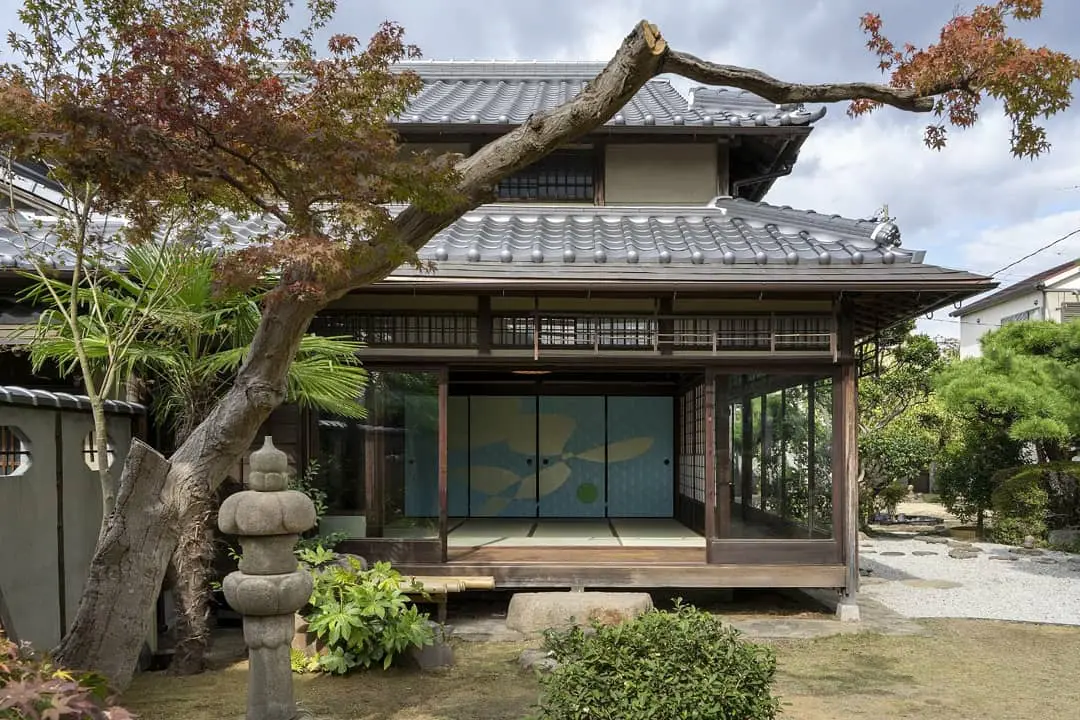
An exclusive stay in a historic Japanese building, reserved as a whole accommodation
With the first day’s itinerary complete, we now head to tonight’s accommodation. Taking the subway and JR train, we travel to Sakai.
A 10-minute walk from the station (or a short ride on a complimentary shuttle available for up to eight guests) leads to SAKAINOMA HAMA Former FUKUI MANSION. This unique accommodation offers an exclusive stay in an entire historic merchant's house. The building, constructed in the early Showa period, preserves the refined aesthetic of Sakai’s merchant culture, evident in the architectural details, furnishings, and traditional fixtures.
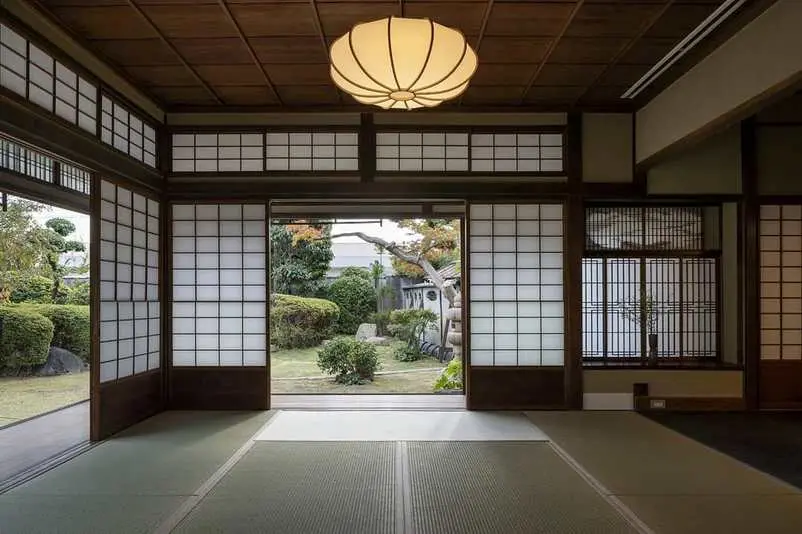
A captivating view of the garden from the traditional Japanese-style interior.
While staying in a renovated old Japanese house is no longer a rarity, this property offers something special. The space exudes a relaxed, inviting atmosphere that balances elegance with comfort. It feels less like staying at a hotel and more like living in a home. Though it may be a first-time visit, the warmth of the space evokes a sense of nostalgia.
The accommodation does not include meals, but with a 24-hour convenience store and a drugstore located right across the street, guests can easily pick up ingredients and enjoy cooking in the fully equipped modern kitchen. There is also an option to order a traditional hot pot meal, making for a cozy and communal dining experience. As stories of the day’s adventures are shared around the steaming pot, it feels like an authentic Japanese family gathering. To end the evening, guests can relax in the Goemon-buro, a traditional Japanese iron bathtub, letting the warmth of the bath melt away the fatigue of the day. The tranquil atmosphere makes it easy to lose track of time.
Basic Information
- Name in Japanese
- 歴史的建造物一棟貸し宿泊「SAKAINOMA HOTEL 濵 旧福井邸」
- URL
- URL
DAY2
9:00 – Departing the Hotel for a Yukata & Tea Ceremony Experience
The second day’s main activity combines two traditional cultural experiences: wearing a yukata and learning the art of Japanese tea.
10:00 – Exploring Sakai in a Yukata & Experiencing the Tea Ceremony
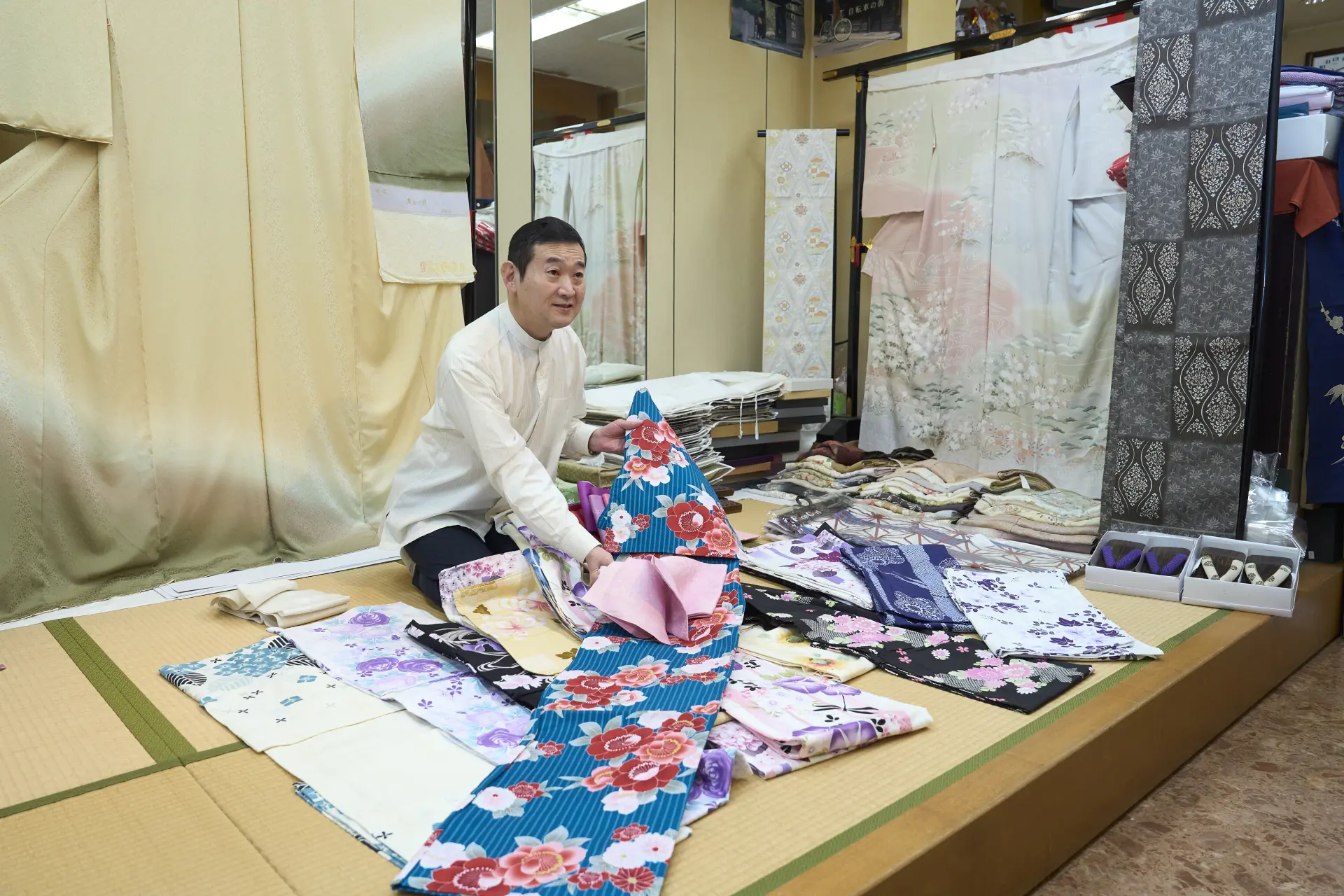
The fifth-generation owner of the long-established kimono store provides expert advice
After checking out, we walk for about 20 minutes to Hamadera Ekimae Station and board the Hankai Tramway, Osaka’s only remaining streetcar line. As the tram clatters along the tracks in the middle of a busy road, we enjoy the retro charm of this historic mode of transportation. After about 10 minutes, we arrive at Shukuin Station.
The first stop is Kawajyu Kimono Shop, a long-established store with nearly 150 years of history, located in Sakai’s oldest shopping district. Here, visitors can rent and have a yukata fitted by experienced staff. Despite its long history, the shop welcomes visitors with a casual and friendly atmosphere. The fifth-generation owner greets guests with the words, "Yukata is stylish but meant to be enjoyed casually, without formality."
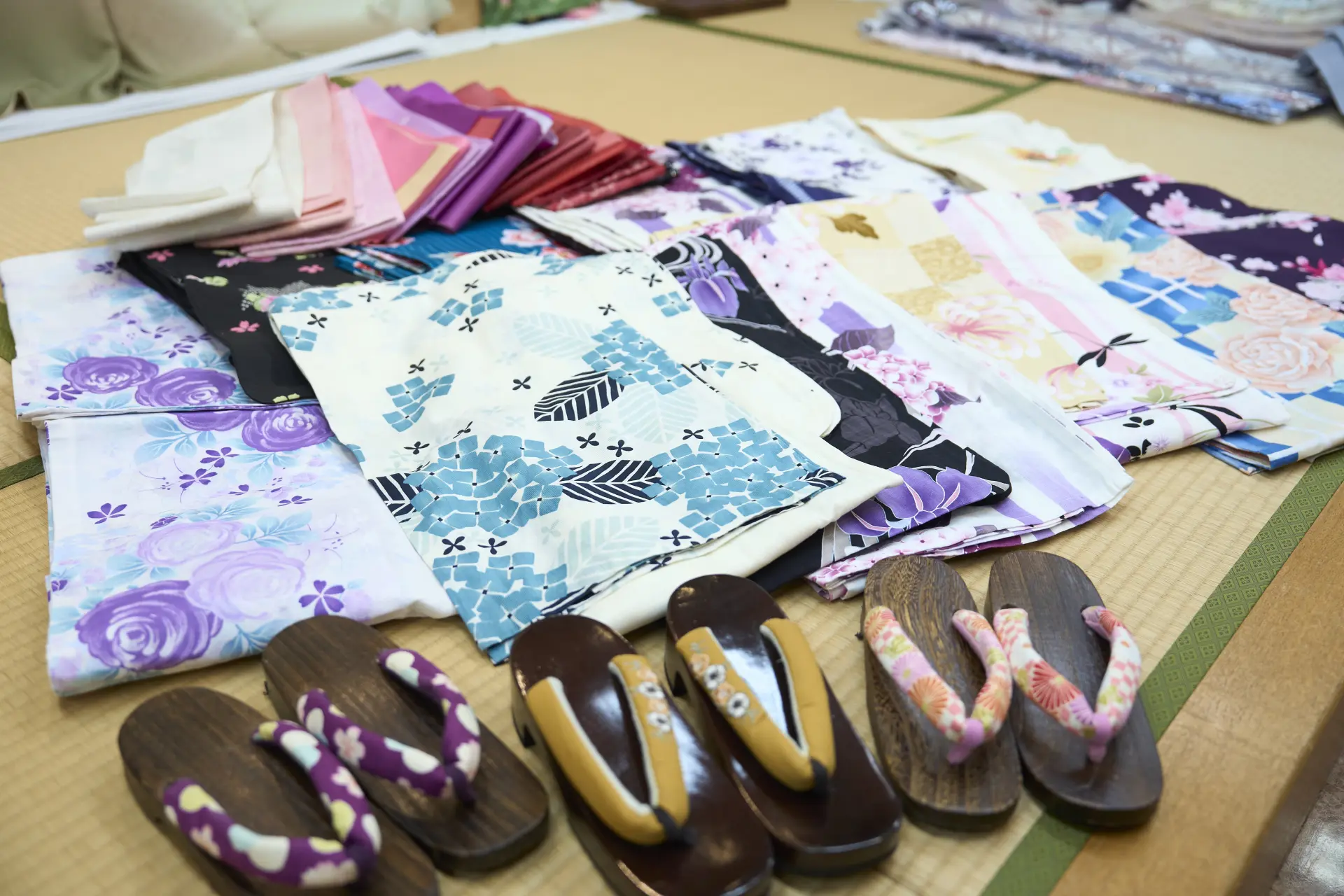
With a wide selection of patterns and sizes, you're sure to find the perfect yukata. (*Image for reference.)
With the owner’s guidance, guests select their favorite yukata from a wide range of options. As the yukata is fitted, the conversation naturally flows, making the experience even more enjoyable. Once dressed, visitors can take a leisurely stroll through the nostalgic shopping streets, stopping by a nearby shrine to offer a prayer for safe travels.
The journey continues to Sakai Plaza of Rikyu and Akiko, a cultural facility dedicated to Sakai’s history. Here, visitors have the opportunity to participate in a tea ceremony, an art perfected by Sen no Rikyu, the founder of the Senke school of tea, who was born in Sakai. Stepping into the traditional tearoom, guests immediately feel a sense of calm and quiet refinement. The structured elegance of the space naturally encourages proper posture and attentiveness.
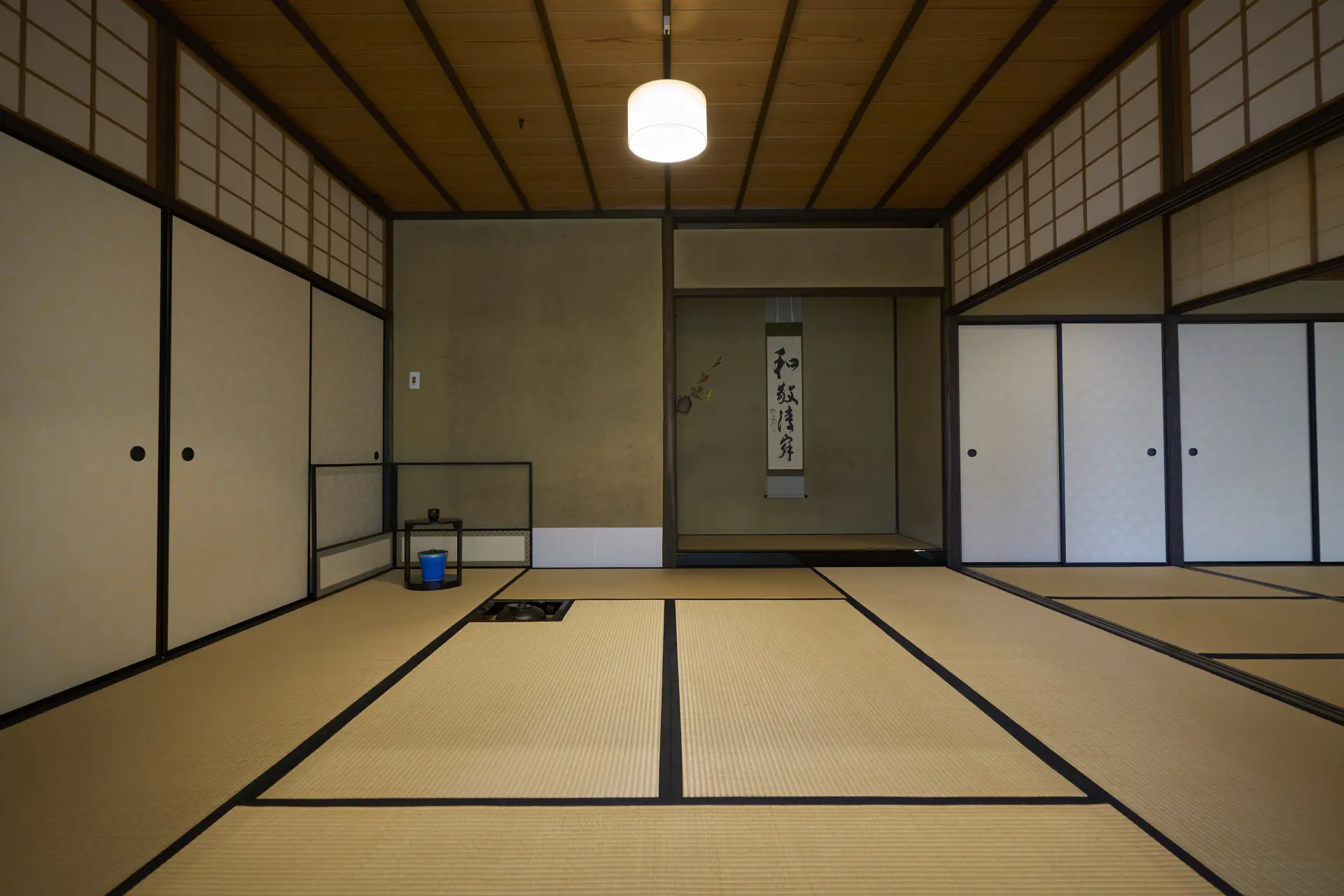
Experiencing chanoyu (tea ceremony) in an authentic tea room setting. (*Image for reference.)
During the session, a master from the Senke school of tea explains not only the procedures of the tea ceremony but also the significance of the surrounding elements. Hanging scrolls, seasonal flower arrangements, and traditional tea sweets all serve as expressions of the host’s hospitality. By the end of the experience, both mind and body feel refreshed and restored.
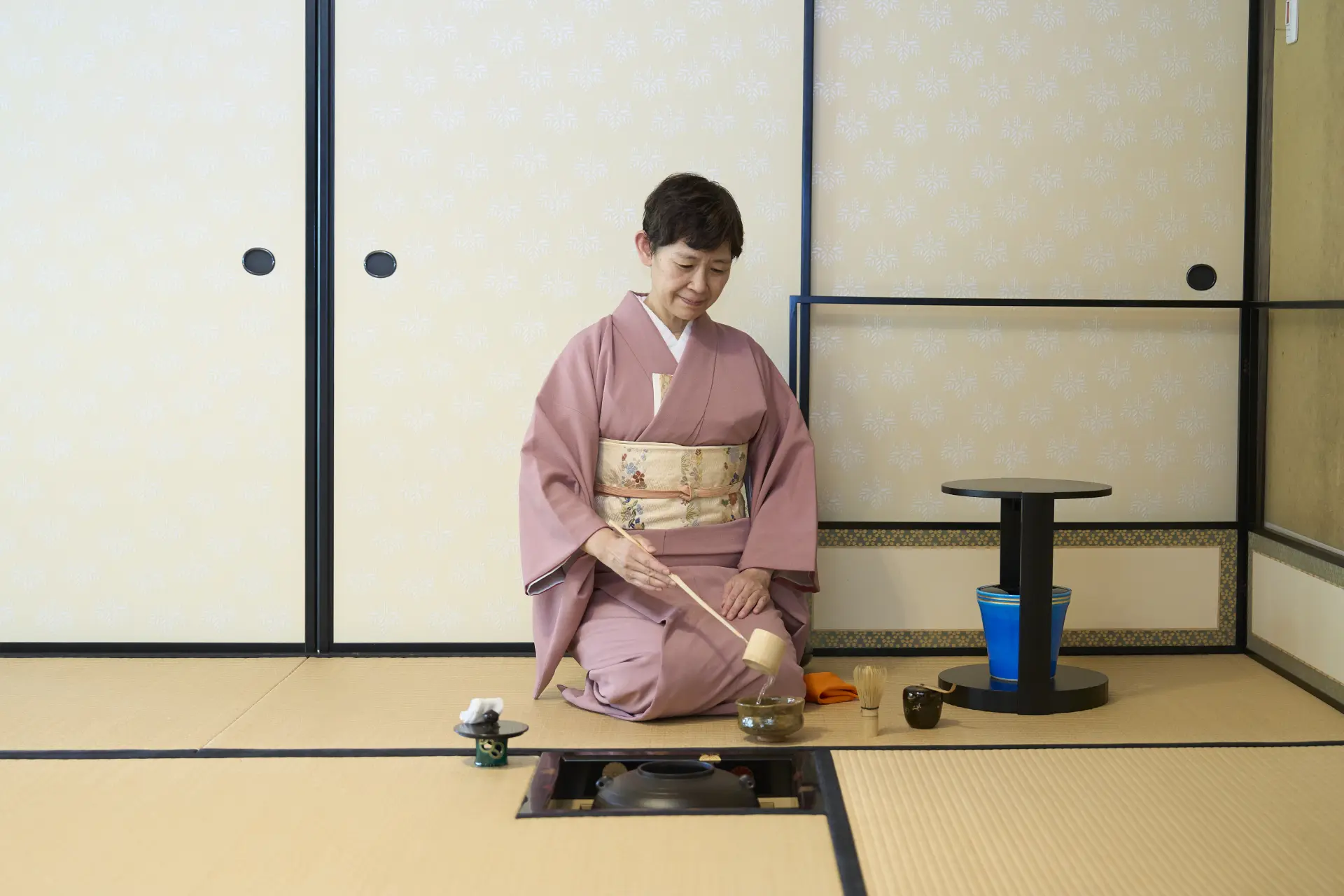
The tea master's elegant movements are mesmerizing to watch. (*Image for reference.)
Basic Information
- Name in Japanese
- 浴衣でお点前体験
- Minimum Participants
- 1 person
- Maximum Participants
- 5 people
- Participation Restrictions
- None
- Meeting Place
- Kawajyu Kimono Shop, 2-1-3 Kaicho-Higashi, Sakai-ku, Sakai City, Osaka 590-0953
- Availability
- Third Sunday of June–September, Second Sunday of October
- Tour Schedule
- Meet at the kimono shop → Yukata fitting (approx. 30 min) → Free strolling & walk to Sakai Plaza of Rikyu and Akiko (approx. 10 min) → Tea ceremony experience (11:20–approx. 45 min) → Free time → Yukata return by 17:00, tour ends
- Duration
- 2–7 hours
- Meals Provided
- No
- Parking
- Not available
13:10 – A Traditional Diner Lunch: “Ginshari en”
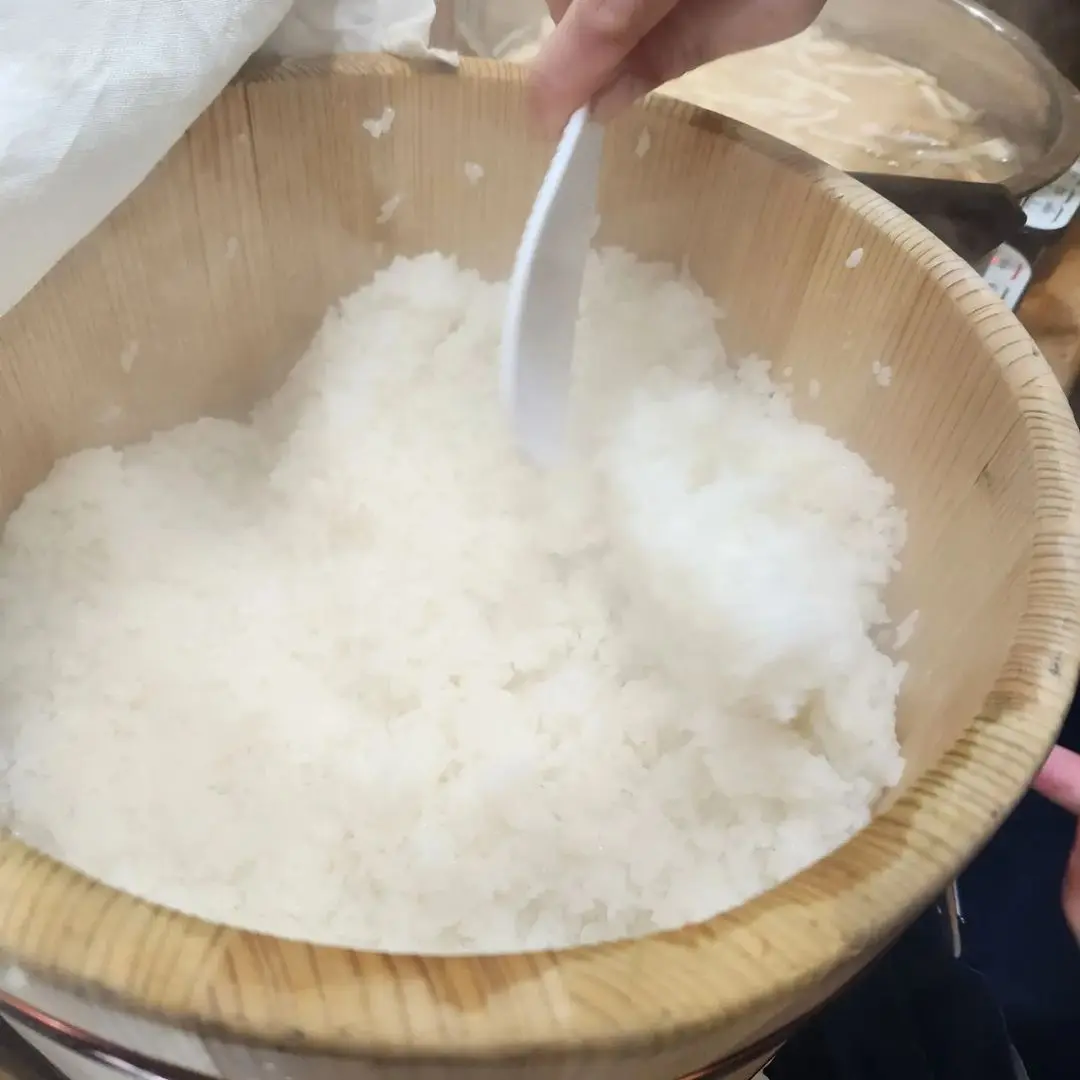
Masterfully cooked ginshari (perfectly steamed rice). Even the rising steam smells delicious.
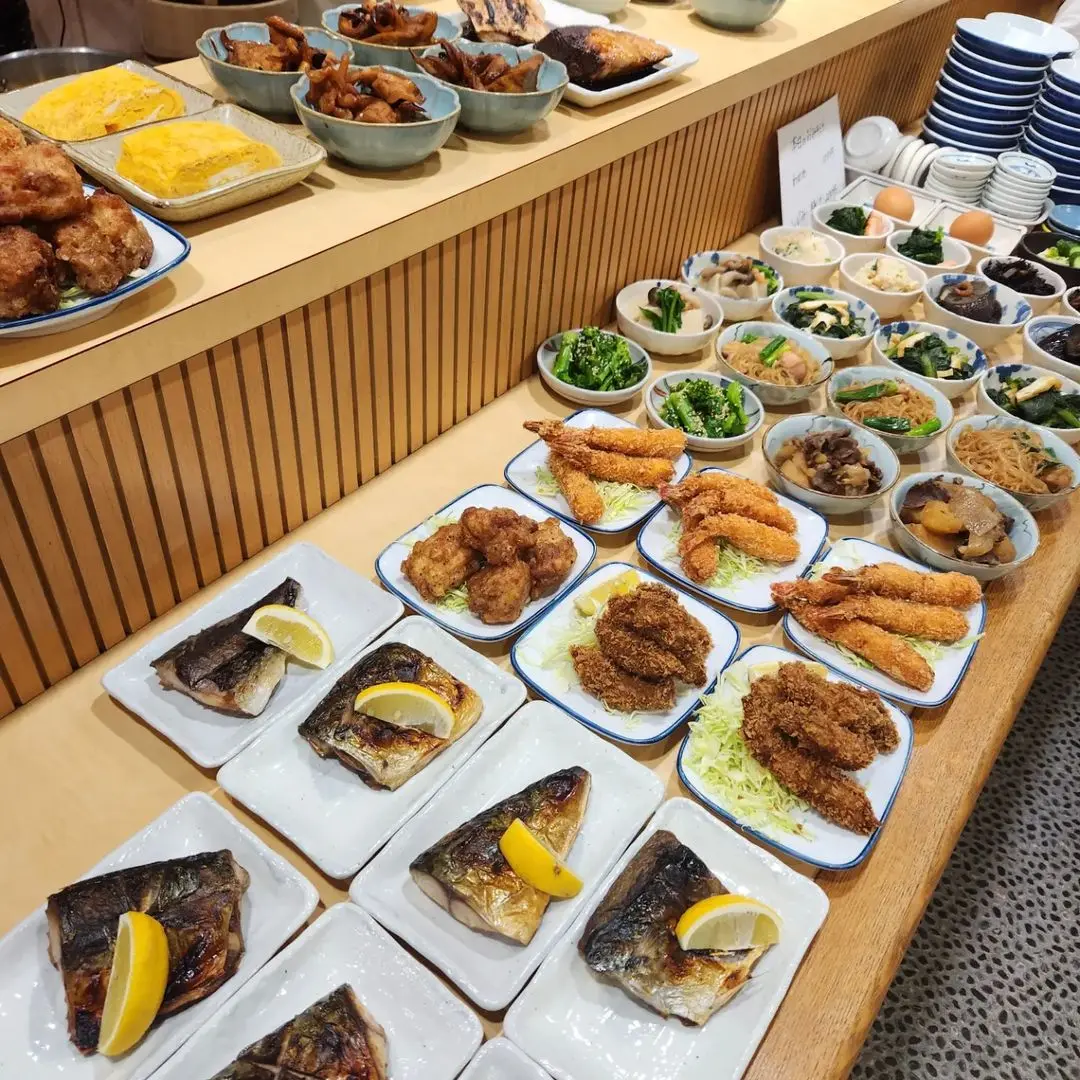
The counter is filled with an array of side dishes and small plates.
After returning the yukata, we head to lunch. A short seven-minute walk through the retro shopping streets brings us to Ginshari en.
In Japan, the term "ginshari" refers to freshly cooked rice that glistens like silver. The owner of this restaurant, Kaname Ogawa, is a master rice cooker who honed his skills at a renowned ginshari specialty shop in Sakai. In 2023, he opened his own restaurant, where perfectly cooked rice takes center stage.
Upon entering, an array of homemade side dishes fills the counter. Each day, the restaurant prepares between 35 and 40 varieties of side dishes, allowing customers to select their favorites. The ordering process, where diners choose their own combination of side dishes to accompany their rice and miso soup, captures the nostalgic charm of an old-fashioned Japanese eatery.
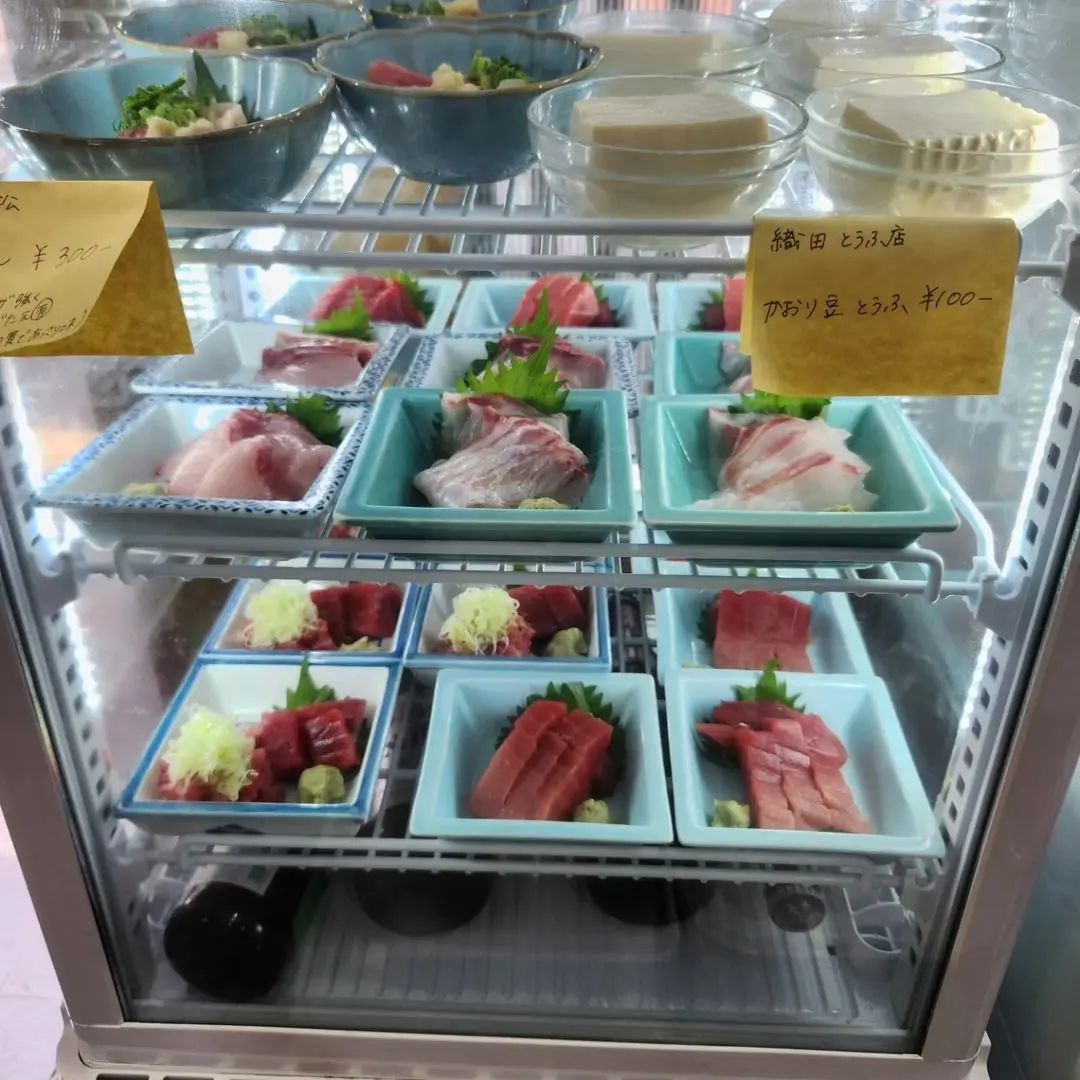
The refrigerated display case features fresh sashimi and other delicacies.

Miso soup packed with ingredients, enhanced by the deep umami and aroma of dashi.
The first bite of rice is a revelation. The warmth and delicate texture fill the mouth with a deep, satisfying flavor. With each bite, the natural sweetness of the rice becomes even more pronounced. Paired with the miso soup and side dishes, the combination is irresistible. The realization of just how delicious simple white rice can be is a pleasant surprise. With free refills, many customers can’t resist going back for another bowl. By the end of the meal, both the stomach and the heart feel completely satisfied.
Basic Information
- Name in Japanese
- 銀シャリ en
- Address
- 1F Okumura Building, 3-1-9 Ebisunocho-Higashi, Sakai-ku, Sakai City, Osaka 590-0945
- Phone
- 080-9755-0477
- Access
- 4-minute walk from Hankai Tramway Hanataguchi Station
- Hours
- 8:00–14:00 (approximate)
- Closed
- Tuesdays
- URL
- URL
15:35 – Exploring Kishiwada Castle & Its Renowned Garden
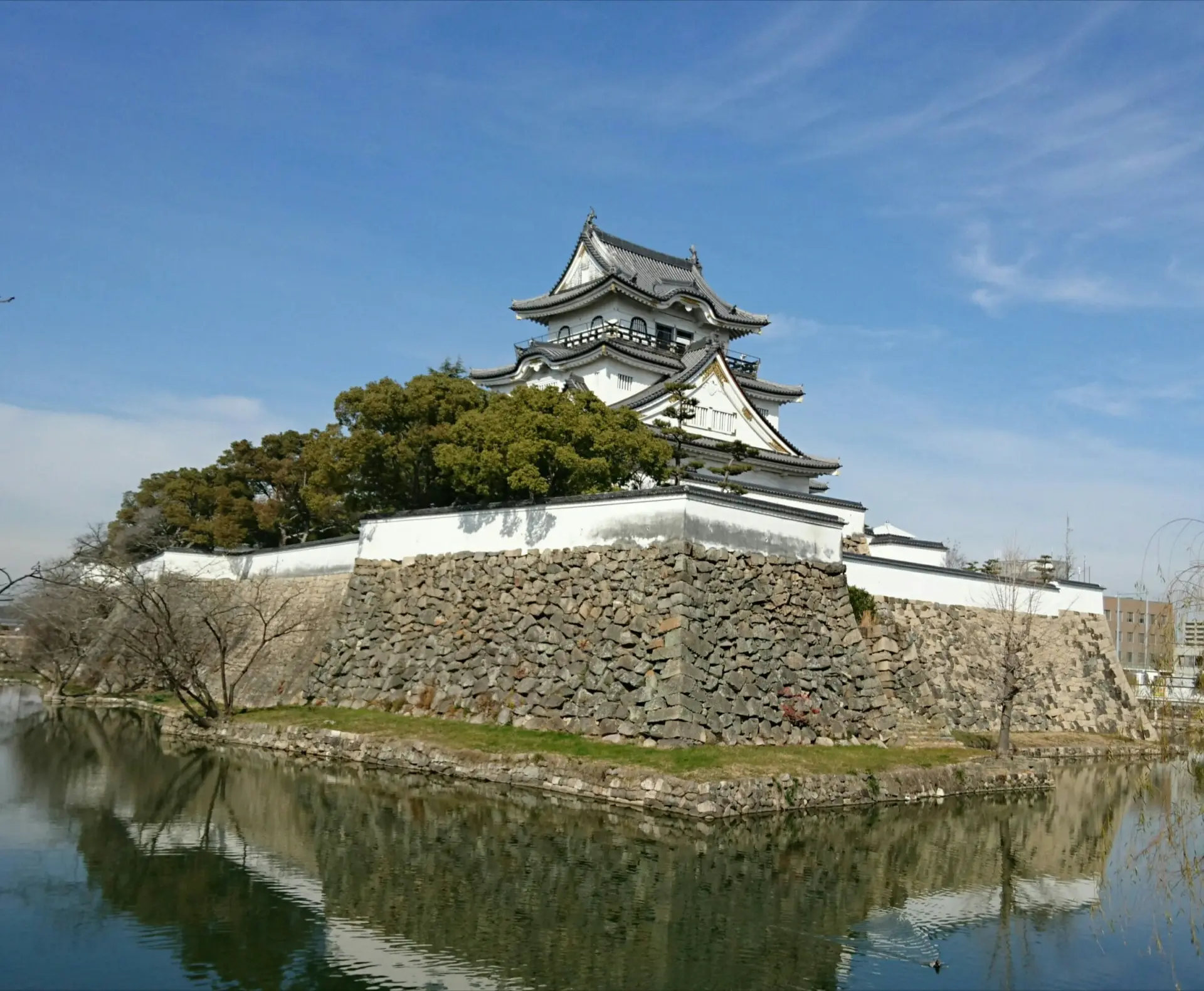
Compact yet beautifully balanced, with a harmonious blend of moat, stone walls, and castle keep
The final stop on our journey through Osaka takes us further south to Kishiwada, a historic castle town famous for its Danjiri Festival, known for its dynamic and energetic floats. A short walk from the station leads to Kishiwada Castle was originally built as a strategic stronghold on the Kishu Kaido route, connecting Osaka and Wakayama. The castle’s three-tiered keep, rising above stone walls and surrounded by a tranquil moat, may not possess the grandeur of Osaka Castle, but its well-balanced proportions create a refined and understated beauty.
Upon entering through the main gate, the Kishiwada Castle Garden (Hachijin Garden) immediately comes into view. Designed in 1953 by Mirei Shigemori, one of the most prominent landscape architects of the Showa era, this karesansui (dry landscape) garden has been designated as a National Place of Scenic Beauty. The garden is designed to be appreciated from any angle, offering a distinct atmosphere depending on the viewing position.
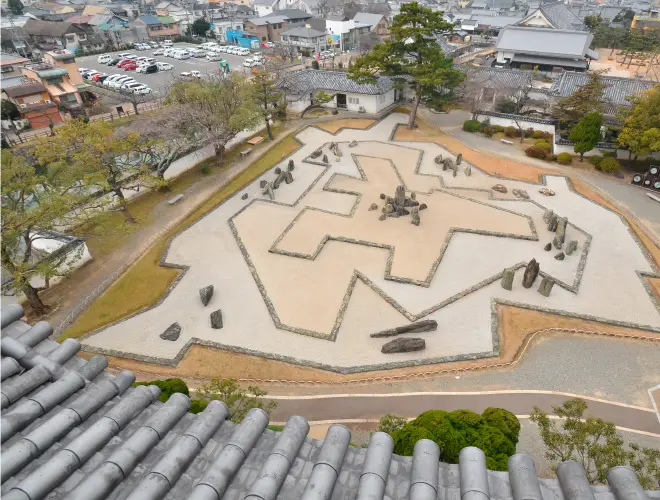
A view of Kishiwada Castle Garden (Hachijin Garden) from the top floor of the castle keep
After admiring the garden, we make our way to the castle keep, eager to explore its interior. Inside, historical exhibits provide insight into the castle’s past, while the corner turret screens a film depicting local legends, offering a deeper understanding of the town’s history. The highlight of the visit is the panoramic view from the top of the keep. Looking down, the Kishiwada Castle Garden (Hachijin Garden) stretches out below, presenting a completely different perspective from when we viewed it at ground level. This contrast highlights the depth and complexity of Mirei Shigemori’s landscape design, leaving us with a renewed appreciation for his artistic vision.
Basic Information
- Name in Japanese
- 岸和田城
- Address
- 9-1 Kishikijo-cho, Kishiwada, Osaka 596-0073
- Phone
- 072-431-3251
- Access
- 13-minute walk from Nankai Main Line Kishiwada Station and 7-minute walk from Takojizo Station.
- Hours
- 9:30–17:00 (Last admission at 16:00)
- Admission
- 300 yen (free for junior high school students and younger)
- Closed
- Mondays (open if a public holiday), New Year’s holidays, and temporary closures for exhibit changes
- URL
- URL
Wrap-up
This two-day journey offered a firsthand experience of Osaka’s rich traditions. While preserving its history, the city continues to evolve, welcoming visitors with warmth and hospitality. It was a journey that made us appreciate Osaka even more—and one that invites us to return.
Check also...
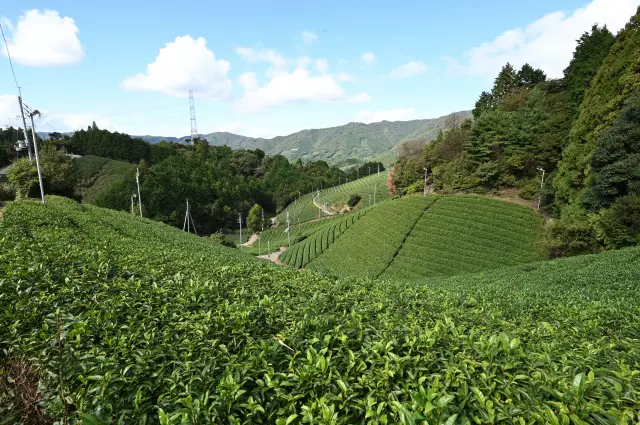
Kyoto: A Journey Through Japanese Gastronomy
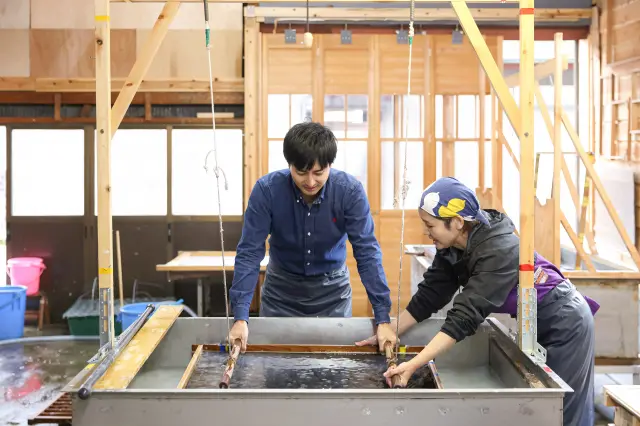
Fukui: A Journey to Experience Japan’s World-Class Craftsmanship
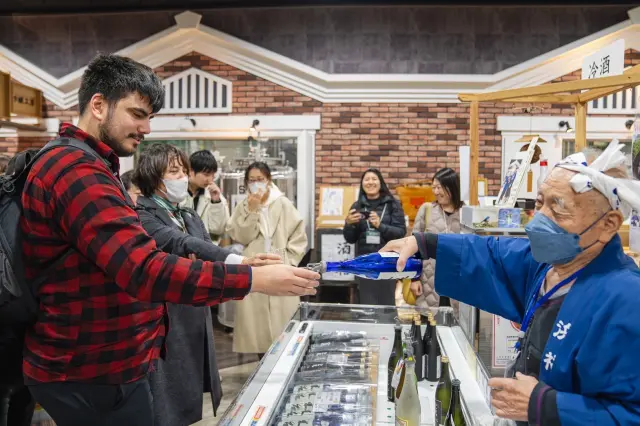
Hyogo: A Journey in Search of Japan’s Finest Sake

Mie: A Journey to Experience the "Ama Culture" Living Along the Beautiful Ise-Shima Sea
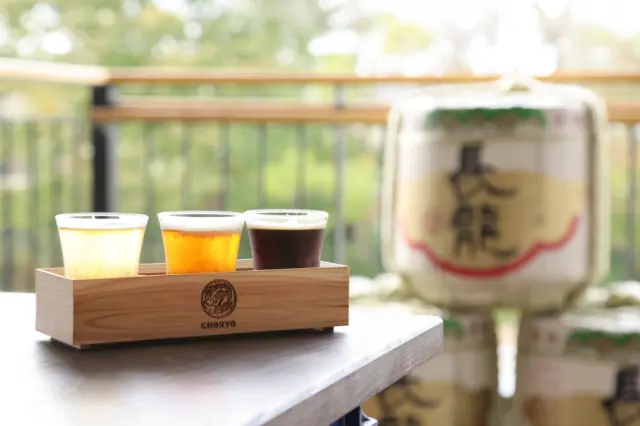
Nara: A Journey Through Its Ancient Fermentation Culture
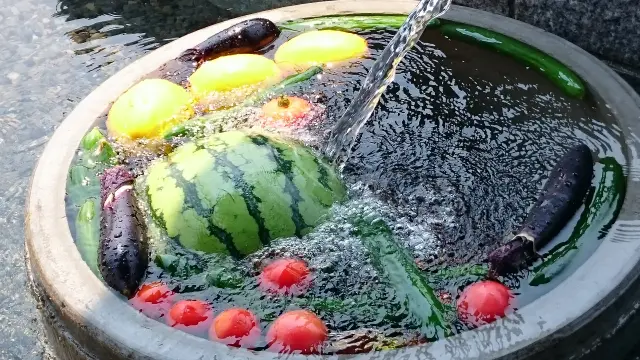
Shiga: Days Steeped in Nature and Blessed Waters Along Lake Biwa
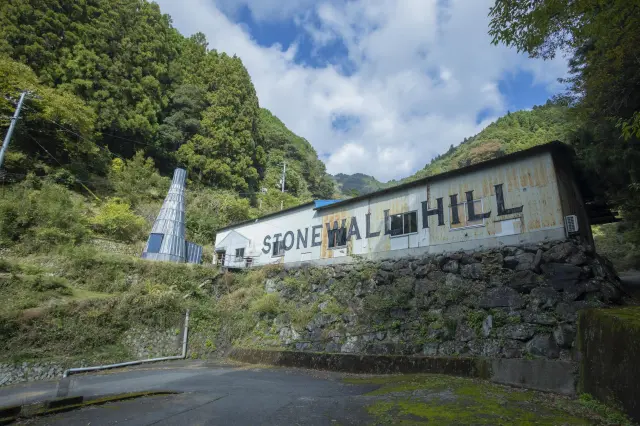
Tokushima: A Journey into Slow Living in the Mountains of Tokushima

Tottori: A Journey to Unwind in the Majesty of Nature at San’in Kaigan Geopark
